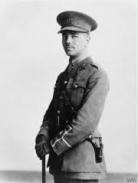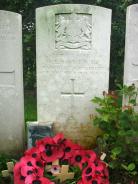Wilfred Owen & World War 1 - Timeline (Charlie Elliott)
Created by Charlie Elliott on Wed, 11/24/2021 - 16:44
Part of Group:
In this timeline, I am going to look at the contextual/ historical factors of World War 1 and how this relates to the literature of the poet Wilfred Owen and his war experiences.
Timeline
Chronological table
| Date | Event | Created by | Associated Places | |
|---|---|---|---|---|
| Sep 1913 to Oct 1915 |
Wilfred Owen Teaching in FranceIn September of 1913, at 20 years old Wilfred Owen moved to Bordeaux, France in order to pursue teaching English. He began teaching in the Berlitz school in Bordeaux in order to pursue his passion for English and poetry. Owen began writing poetry when he was 15 years old and by this time was still looking for inspiration and his own personal style of literature. While tutoring a family at Bagneres de Bigorre, in the Pyrenees Owen met the French poet Laurent Tailhade. Building a friendship with Tailhade resulted in Owen learning a lot about French poetry and poets including the likes of; Pierre de Ronsard and Francois Villon. This exposure to French poetry influenced Owen to build and find his own writing style to talk about the war and his experiences. |
Charlie Elliott | ||
| 28 Jul 1914 to 11 Nov 1918 |
Start of World War IA month after the assassination of Archduke Francis Ferdinand, Austria-Hungary declares war on Serbia beginning World War 1. This war involved countries across Europe, the central powers (Germany, Austria-Hungary, Bulgaria, and the Ottoman Empire) against the allied powers (Great Britain, France, Russia, Italy, Japan, Romania, and the United States). WW1 caused a huge shift in society as it meant almost all capable men were sent off to fight in the war and the women were left at home to pick up the factory jobs and labor the men had left behind. This was the first great war and it brought destruction, carnage, and mass loss of life to everyone involved, it is estimated over 16 million soldiers and civilians lost their lives in World War 1. This bloodshed on the battlefield inspired the work of soldiers such as Wilfred Owen who fought on the frontlines to create such historic poetry and works of art. |
Charlie Elliott | ||
| Oct 1915 to Jun 1917 |
Owen Enlists in WW1In October of 1915, Wilfred Owen leaves France and his career as an English language tutor in order to return back to England to enlist for the war. Owen enlisted in the 3/28th London rifles regiment, after training and being commissioned to the 2nd Manchester he finally had his first experiences of active service in January of 1917. Owen is deployed as a reinforcement officer into the frontline at the battle of Serre and St. Quenten in charge of "A" company. While fighting on the frontlines for a couple of months Owen got a concussion from a fall and was later sent back to Netley hospital, Hampshire in June of 1917 due to shell shock. |
Charlie Elliott | ||
| Aug 1917 to Aug 1918 |
Owens Hospital ExperienceUpon his return to Netley hospital in England after suffering shell shock, Owen was sent to Craiglockhart war hospital in Edinburgh to undergo treatment. Owen was encouraged to write for his treatment and actually edited the hospital's magazine. While in hospital Owen met one of his literary heroes Siegfried Sassoon, Sassoon was a popular poet with published work who Owen admired for his 'cause' expressed throughout his writing. This new friendship allowed Owen to develop his skills and poetry became a way for him to express the pain and suffering the war had brought to him. With this new guidance and encouragement to bring his war experience into his writing, Owen became an activist with his antiwar poetry. Almost all of his famous war poems were written in under a year span after meeting Sassoon in August of 1917, who clearly inspired this creative burst of writing from Owen. |
Charlie Elliott | ||
| 4 Nov 1918 |
Death of Wilfred OwenAfter recovering and being passed fit for service Owen returned to the western front to fight in France. However, on November 4th, 1918 Wilfred Owen was killed during battle in an attempt to cross the Sambre-Oise canal at Ors. Owen's death is especially tragic as the armistace was declared just one week after his death resulting in the end of world war 1, therefore around the time his family back home learned of his death they also found out the war was over. Once the public learned of Owen's death his poetry continued to gain popularity, in 1919 seven of his poems appeared in the 'Wheels' poem anthology, the first time multiple of Owen's poems had been published. Then in 1920, his close friend Siegfried Sassoon edited and published Owen's single volume of poems called 'Poems of Wilfred Owen' which contained some of his most well known poems to this date including 'Dolce et Decorum Est'. Owen's reputation continued to steadily grow over the years as he was recognised by other famous poets for his outstanding and impactful work. Wilfred Owen will forever be regarded as one of the best and most significant poets from world war 1. |
Charlie Elliott |





